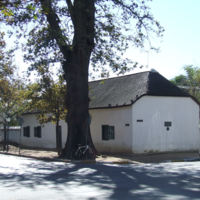
Stellenbosch Village Museum
Stellenbosch Village Museum is one of 28 museums affiliated with the Western Cape Provincial Government’s Museum Service. The Village Museum consists of four period houses dating from the early eighteenth century to the Victorian era. It opened during the 1970s as part of what was then a larger complex of museums in Stellenbosch. The museum was partially redeveloped by Museum Service staff in 2015, with new exhibition panels and an interactive historical timeline installed in the foyer area. Focus is given to the historical origins of Stellenbosch with attention given to a diverse range of historical actors, from the enslaved to Khoi people. This is an important part of moving historical interpretation at the Village Museum away from the whites-only affair established in the apartheid years. Artefacts uncovered during excavations of the period houses and their outbuildings are displayed, though these lack contextual information in places.
Slavery is not referred to in great detail in the exhibition panels, however it does feature on the interactive timeline. Both the abolition of the slave trade in 1807 and abolition of slavery in 1834 are referenced. Efforts are made to posit the Bletterman family – original owners of the Village Museum’s late eighteenth century property - as slave owners. Particular attention is given to the case study of the enslaved woman Manisa who was owned by Stellenbosch resident Johanna Barbara van Biljon. This focus comes from the unusual level of surviving material which enabled a reconstruction of Manisa’s life, including separation from her family through public auction. There is even a full body portrait of Manisa, taken from a Cape Argus article published upon emancipation. Problematically, one of the outbuildings of Bletterman House which potentially functioned as slave quarters has been rented out by the museum and presently houses a number of eateries. No connection is made between references to the outbuildings as slave quarters in the historical timeline and their present use.
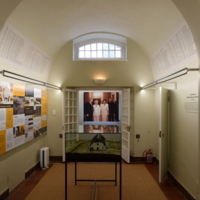
Vergelegen
Vergelegen is a wine estate, founded in 1700 and presently owned by Anglo-American subsidy AmFarms. As with the majority of South African wine farms of such a vintage, its early labour force rested on enslavement. Historical interpretation on the estate can be traced to an archaeological dig conducted by a team of academics from the University of Cape Town between 1990 and 1992. At a time of burgeoning scholarly enquiry into Cape slavery, this work excavated the former slave lodge on Vergelgen with the explicit intention of unearthing items which might hint towards the existence of slave culture. A number of personal items including coins and buttons were discovered, whilst the most significant find was of the skeletal remains of an enslaved woman who was affectionately named ‘Flora’ by estate staff.
The results of the archaeological work were displayed in the estate’s foyer together with contextual information. This made Vergelegen probably the first location in South Africa to mount a detailed exhibition relating to Cape slavery. The existence of the archaeological objects can be considered particularly significant, given that few tangible links with Cape slavery exist in museum collections. A second exhibition focussing on Vergelegen’s historical owners was developed several years later in the former manor house, and both exhibitions were subsequently amalgamated prior to being refreshed in 2016.
Presently, the names of people known to have been enslaved on Vergelegen are listed on the wall/ceiling of the first gallery, whilst the origins of enslaved people and their role on the estate are made clear. The objects unearthed during the early 1990s are displayed as tangible links with a past described by text. Additional historical context focuses on wine farming and the early Cape economy, historical estate owners, and notable visitors to Vergelegen.
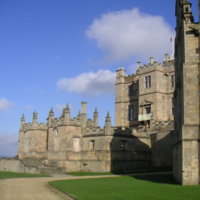
Slavery and the British Country House
In 2007 English Heritage (now Historic England) commissioned research into the linkages between properties in its care and transatlantic slavery, to coincide with events to commemorate the bicentenary. A report produced by historian Miranda Kaufmann identified 26 properties with some level of connection to slavery or abolition. As a result, more detailed surveys of four sites - Bolsover Castle, Brodsworth Hall, Marble Hill and Northington Grange - were commissioned in 2008, and the findings presented at the 'Slavery and the British Country House: mapping the current research' conference in 2009. The conference was organised by English Heritage in partnership with the University of the West of England, the National Trust and the Economic History Society. Findings were later published in 'Slavery and the British Country House' (2013), edited by Madge Dresser and Andrew Hann. The publication and the 2008 reports are available to download from Historic England's website.
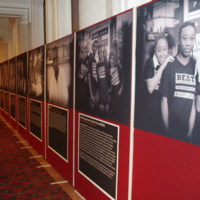
Freedom Roads
The Freedom Roads exhibition at Guildhall Art Gallery was one of several initiatives led by London Metropolitan Archives to mark the bicentenary. The exhibition featured contemporary photographic portraits of people of African origin whose work has contributed to the continuing struggle for human rights in different fields. Colin Prescod, Shirley Thompson, Eric and Jessica Huntley and Rudolph Walker were amongst the individuals featured. Others like the young people from BEAT (Black Experience Archive Trust) were engaged in a project to find out about significant people in their local community. Each person was photographed with an image of an object or place which has a special significance to them. The other part of the exhibition focused on relevant archival materials held by London Metropolitan Archives, including the South African Bill of Rights and a copy of the Constitution signed by Nelson Mandela, Cyril Ramaphosa, F. W. De Klerk and Roelf Meyer. Other material relating to slavery and abolition included a letter from John Julius, a plantation owner on the island of St. Kitts.
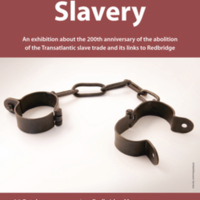
Redbridge and Slavery
Redbridge Museum's exhibition to mark the bicentenary examined the London Borough of Redbridge's connections to the slave trade and abolition. These links included local resident Josiah Child, once Governor of the East India Company, an investor in the Royal African Company and owner of plantations in Jamaica. The Mellish family of Woodford had connections with the West India Docks in London, built for the sugar trade. Alexander Stewart of Woodford owned Jamaican plantations and acted on behalf of owners of enslaved Africans in compensation claims after abolition. The exhibition also examined church records detailing some of the Black residents of Redbridge in the 17th and 18th centuries. Music from the Caribbean island of Dominica was included, as was a series of personal responses to the bicentenary by local residents.
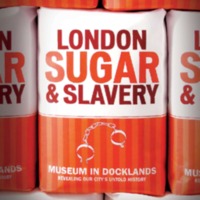
London, Sugar and Slavery
The Museum of London Docklands opened the London, Sugar and Slavery gallery in 2007, and it remains a permanent exhibition. The museum, housed in an old sugar warehouse on London’s West India Dock, retold the narrative of the transatlantic slave trade from the perspective of London, once the fourth largest slaving port in the world. Through personal accounts, film, music, interactive exhibits and over 140 objects, the exhibition looks at the various stages of the transatlantic slave trade, including life and trade on the West India Dock, and conditions for the enslaved on the Middle Passage and the Caribbean plantations. The final section of the gallery focuses on the legacies of the slave trade for British society today. Community collaborations also helped shape the gallery.
The museum also created a walking trail for the local area, highlighting key architectural features and buildings that had a role in the transatlantic slave trade. The Slave Map of London was developed in collaboration with three London museums: the Cuming Museum in Southwark, Bruce Castle Museum in Haringey and Fulham Palace Museum. Users navigated an online map to discover over 100 different locations throughout London which played a part in the transatlantic slave trade and the fight to end it. A schools programme that accompanied the opening of the exhibition included drama performances and workshops. Courses that ran alongside the exhibition in 2007 included ‘Resistance and Achievement: the story of African and Caribbean people in Britain’, in partnership with Middlesex University.
In 2018, the museum reflected on the 10 year anniversary of London, Sugar and Slavery with a workshop to explore the significance of the gallery, with contributions from artists, museum practitioners and emerging artists.
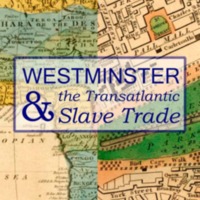
Westminster and the Transatlantic Slave Trade
An exhibition by the City of Westminster Archives Centre focused on the impact of the transatlantic slave trade and its abolition in Westminster, which drew on the Centre's archives and local studies collections. Links explored included the parish of St Anne's Westminster with St John's Antigua, and the large circle of planters living in Marylebone in the 18th and 19th centuries. The exhibition also documented the lives of the African residents of Westminster during the age of the slave trade. Some of the individuals looked at in the exhibition included James Somerset, Granville Sharp, Ignatius Sancho, Ottobah Cugoano, Olaudah Equiano, and the African activists who styled themselves 'Sons of Africa'.
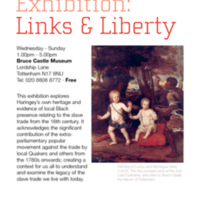
Links and Liberty
An exhibition at Bruce Castle Museum (in partnership with Euroart Studios) explored the transatlantic slave trade, Haringey's heritage relating to the trade and its legacy, and the historic Black presence in the borough from the 16th century onwards. There was a particular focus on the painting of Lucius and Montague Hare, sons of Lord Coleraine (former owner of Bruce Castle), with their African servant. The exhibition also looked at the extra-parliamentary popular movement against the trade by local Quakers such as Priscilla Wakefield and others. Contemporary dance workshops for secondary schools were led by dance company Movement Angol.
The Links and Liberty exhibition included 'Stolen', a life-size installation by artists at Euroart Studios (John Fowler, Lorraine Clarke and Nigel Young) of a section of a slave ship. School pupils were encouraged to climb inside to imagine conditions on board.
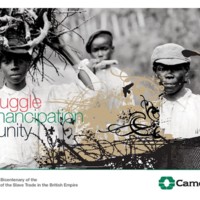
Struggle, Emancipation and Unity
The year-long programme of commemorative events from Camden Council was put together in consultation with the 1807-2007 Taskforce of local African and Caribbean community leaders. The key to these events was remembering slavery through the resistance of Africans, their celebration in their liberation and their unity in tackling present-day inequalities. Camden’s 18th and 19th Century Slavery Trail was created around the area. In eight stops, it explored the lives of men and women connected to the slave trade who lived and worked in the London Borough of Camden. The Resistance Film Season, in partnership with the British Museum, explored the legacy of the slave trade through a mixture of contemporary and classic films. Other events also included local exhibitions, poetry readings, debates and talks.
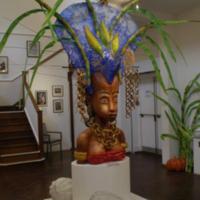
Parallel Views: Black History in Richmond
The Parallel Views exhibition and its associated community engagement programme explored the relevance of the bicentenary for communities in the London Borough of Richmond upon Thames, uncovering local associations with slavery and its abolition. It also told the parallel story of twin town Richmond, Virginia, USA, to broaden understanding of the transatlantic slave trade and the impact of its demise. The exhibition examined evidence of individuals of African origin who had come to Richmond, and residents with financial links to slavery and the slave trade, and to abolitionism. A film piece by choreographer and dance historian Dr Rodreguez King-Dorset explored the use of dance within the free Black community in London during the era of abolition. A display of contemporary artwork responded to the ideas of the exhibition. A sculpture by carnival artist Carl Gabriel linked consumers in Richmond and the conditions of production of slave-grown crops. The design was inspired by a series of workshops with local families. Artist-led workshops for children and young people led to the creation of a carnival costume piece which was included in the exhibition.
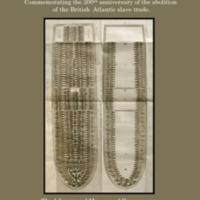
Squaring the Triangle: Freemasonry and Anti-Slavery
The exhibition at the Library and Museum of Freemasonry to mark the bicentenary arose from a project to catalogue their historical collections relating to Masonic history in the West Indies and America between 1760 and 1900. This period covers the establishment of African Lodge, the first Masonic lodge for African-Americans. Its first Master was Prince Hall, a freed slave and respected Boston resident who had fought for the British. From 1847 his name has been synonymous with Prince Hall Masonry, the first major Black Masonic organisation in the world. The library holds eleven letters written by or for Prince Hall. The exhibition and cataloguing of this correspondence enabled the library to start compiling details of early Black and Asian Freemasons in its collections. The exhibition also looked at members in the 18th and 19th century who were both slave owners and abolitionists, and the establishment of lodges in the Caribbean.
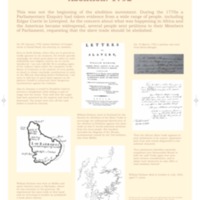
Dumfries and Galloway and the Transatlantic Slave Trade
An exhibition exploring the connections between the Scottish region of Dumfries and Galloway and the transatlantic slave trade toured Dumfries Museum, the Stewartry Museum in Kirkcudbright and Stranraer Museum. At each venue, the exhibition was accompanied by displays of material and a lecture. The catalogue of new research to supplement the exhibition by Frances Wilkins set out to correct misunderstandings about the role of people from the region in the transatlantic slave trade, to prove a history of connections independent of Glasgow or anywhere else. Evidence suggests that men from smaller towns such as Dumfries and Kirkcudbright were involved in the transatlantic slave trade as merchants, slave traders or plantation owners. For example, in the late 18th century, plantation supplies were sent from Kirkcudbright to the island of Grenada; the vessels returned with rum, sugar, and cotton wool.
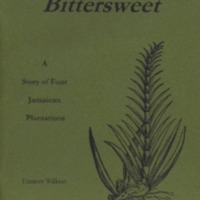
Bittersweet
The Bittersweet exhibition was held during the summer of 2007 at Tissington Hall, Derbyshire, home of the FitzHerbert family since the 17th century. The exhibition and accompanying booklet by Frances Wilkins describe life, work and slavery on four Jamaican sugar plantations inherited by the FitzHerbert family in the 18th century - Blue Mountain, Forrest, Grange Hill and Vere, plus the coffee plantation of Retrieve Mountain - and subsequently managed from Tissington Hall. Research of the FitzHerbert papers held at Derbyshire Record Office revealed evidence about the lives of the enslaved and the overseers, the sugar production process and the connections to plantation owners in England. The exhibition was housed at Tissington during 2007 and then was available on loan to other houses in Derbyshire and to local schools. The exhibition coincided with Tissington’s annual Well Dressing celebrations. The special 2007 design to commemorate the bicentenary was by Wendy Greatorex (photographer Glyn Williams). Tissington Hall was one of several member houses of the Historic Houses Association to mark the bicentenary.
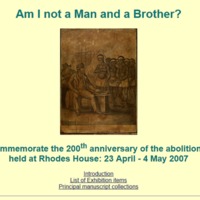
Am I Not a Man and a Brother?
‘Am I Not a Man and a Brother?’, an online exhibition to mark the bicentenary, was launched by the Bodleian Library of African and Commonwealth Studies at Rhodes House. Some of the items were also on view in an exhibition at Rhodes House in April and May 2007. The exhibition included manuscripts and books from the Library, among them the manuscript journal of Rev. James Ramsay, who wrote and worked against slavery after seeing for himself the conditions on board a slave ship while a Royal Navy surgeon. Also exhibited were related artefacts from the collection of Franklin Smith, including a tobacco jar and a clay pipe bowl, both in the shape of the head of a slave (indicating that their owners may have been slave owners), and the late 18th-century engraving of a slave market in the West Indies, published by an anti-slave trade body.
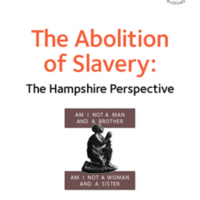
The Abolition of Slavery: The Hampshire Perspective
A touring exhibition exploring Hampshire's links with slave ownership and the abolition campaign was produced by (and featured material from) Hampshire Museums and Archives Service and Hampshire Record Office. The exhibition was on show in the Record Office foyer, before travelling to museums, schools and community centres around the county. The exhibition revealed that there were slave owners living in places in Hampshire such as the village of Hurstbourne Tarrant, and told the story of a slave-trading voyage in 1700 led and financed by men from the Titchfield area. Black servants, very likely former slaves, could be found in unlikely places such as Martyr Worthy and Bramdean. The abolition campaign was fought in the columns of the Hampshire Chronicle and the Hampshire Telegraph, and communities as diverse as Portsmouth, Whitchurch and Fordingbridge sent in petitions to Parliament on the subject. The exhibition also mentioned white slaves taken from the English coast by Barbary pirates, and the testimony of a group of emancipated slaves from Cuba who arrived in Southampton in 1855 on their way to Lucomi in Africa.
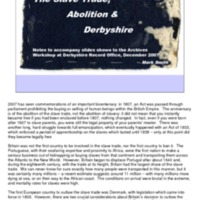
Derbyshire Slavery Project
A community project organised by SOS Immigration, a support organisation for asylum seekers and refugees based in Derby. In December 2007, Derbyshire Record Office held workshops for volunteers, designed to introduce archival and analysis skills when studying historical documents relating to slavery. The project’s aims were to co-ordinate research into links between Derbyshire and slavery, and to communicate the results to the public.
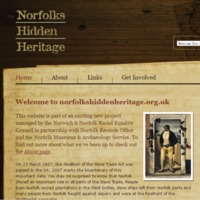
Norfolk's Hidden Heritage
Norfolk’s Hidden Heritage was a partnership project between the Norwich and Norfolk Racial Equality Council (NNREC), the Norfolk Record Office (NRO) and the Norfolk Museums and Archaeology Service (NMAS) which researched the links between Norfolk and transatlantic slavery. For example, many slaving voyages left England from King's Lynn, while the Dalling family of Norfolk owned the Donnington Castle plantation in Jamaica. The exhibition, curated by Norfolk Record Office, won an award for the Best Black History Project for the East of England from the Black History Society. The website provided an interactive timeline to trace Norfolk’s Hidden Heritage from 1670 to today. There was also a database to search for important people, places and dates. Workshops were run in a number of schools, and information packs distributed. More widely, the project worked with the University of East Anglia, Norwich City College, the Prison Service and the Youth Offending Team. As part of the project, Norwich Academy Drama Group put together the production 'Diary of a Son of Africa', about an enslaved African who eventually gained his freedom.
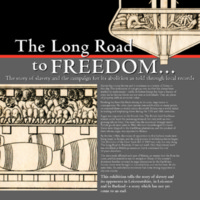
The Long Road to Freedom
As made clear by The Long Road to Freedom exhibition in 2007, the Record Office for Leicestershire, Leicester & Rutland contains a significant collection of documents which reveal local connections with the slave trade, and with those who campaigned for abolition. Several prominent local families owned slaves on plantations in the Caribbean and on the north coast of South America. Leading Leicester abolitionists, Elizabeth Heyrick and Susanna Watts, orchestrated a vigorous anti-slavery campaign in Leicester, including a boycott on sugar. Local landowner, Thomas Babington of Rothley Temple, was a friend of William Wilberforce and hosted meetings of anti-slavery campaigners at his home. The exhibition also highlighted a unique collection of mid-19th century papers which provide access to the voices of the enslaved in a slave court in Lagos, West Africa. It also told the stories of two former slaves, Rasselas Morjan and Edward Juba, who came to Leicestershire with their owners. This exhibition toured to various venues in the region, including Abbey Pumping Station, where it coincided with family activities focused on the work of Elizabeth Heyrick.
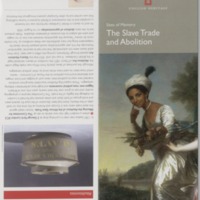
Sites of Memory: The Slave Trade and Abolition
The Sites of Memory project was the first research by English Heritage (now Historic England) to provide an overview for the public of the buildings, memorials and grave sites across England that reflects the role of the slave trade in British history, and resistance to it. The project explored the history of Black people in Britain during the 18th and 19th centuries by exploring the stories behind the historic built environment of local streets, buildings and landmarks. The research (by historians Angelina Osborne and S. I. Martin, on behalf of English Heritage) also identified sites associated with the slave trade and plantation wealth, and with the abolitionists who campaigned for an end to slavery. English Heritage also made recommendations for new listings for historic sites that mark the Black presence.
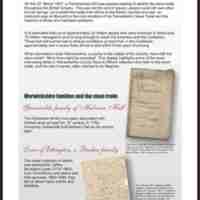
Slavery: A Warwickshire Connection?
An exhibition exploring the connections between Warwickshire and the transatlantic slave trade, using the collections held at Warwickshire Record Office. Several Warwickshire families owned plantations in the Caribbean, such as the Greatheed family of Guy's Cliffe who owned an estate in St Kitts. Vice Admiral Lord Hugh Seymour was prominent in the West Indies as Commander of Britain's naval forces in the Leeward and Windward Islands. Church of England parish registers reveal the presence of black people in Warwickshire's history.